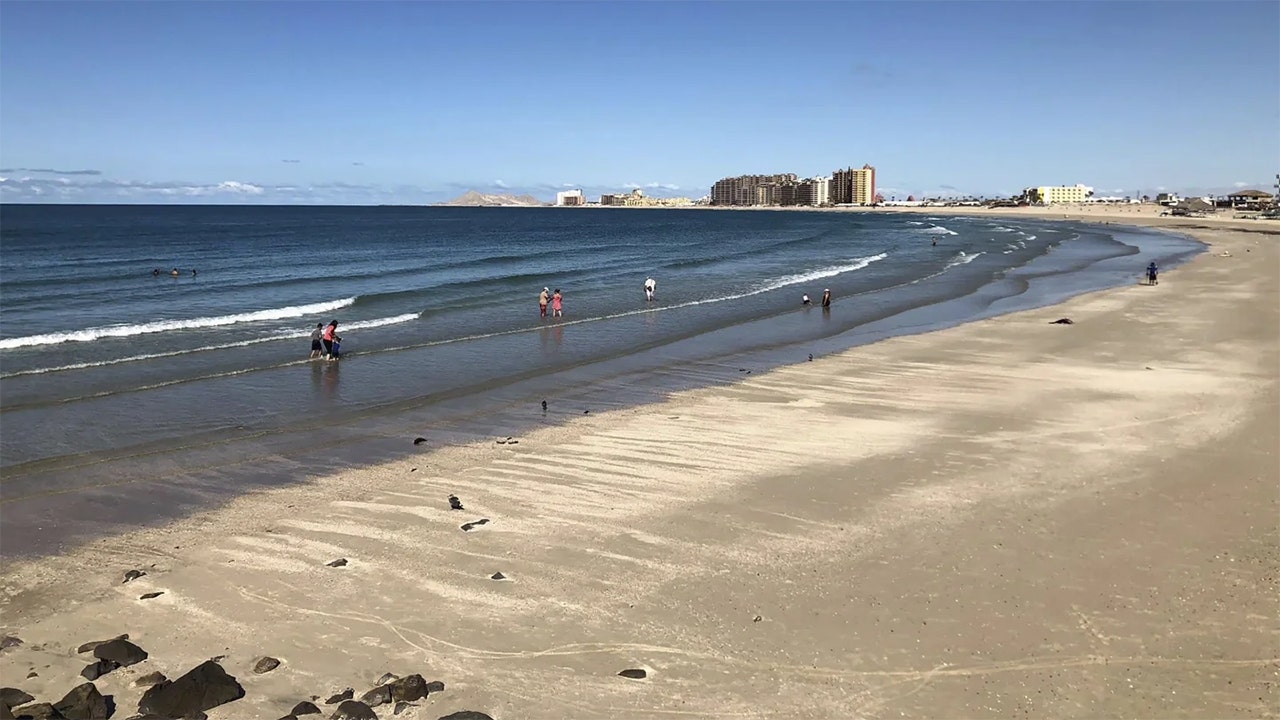Nearly a year after catastrophic flooding struck Vermont, the city of Barre confronts the overwhelming task of steeling itself for the next climate disaster.
Vermont
The Valley Reporter – Re-wilding –

By Sarah E. Zschau
In this time of planet uncertainty, there is a movement toward re-wilding and creating spaces for habitat. Embracing this does not have to be arduous, in fact it’s easy. Want more time on the weekends for fun instead of giving up half of the weekend mowing the lawn? Then you, too, can do more by doing less. Let your yard be a host for species and you will benefit too. Let go, and our earth’s natural balance will do the rest. Here’s how.
MOW WHERE YOU GO
Look at your space and figure out the pathways that you use and any play areas. Mow there only. Get creative with pathways if your space is large enough. Pathways through a meadow create a sense of whimsy and wonder. They can have destinations or shapes and they can change annually if you like. If you only have a tiny yard let the edges go and play with the shape of your mown area.
It is beneficial for insect species to leave wild spaces under trees, so try mowing a wide birth around a canopy. Mowing two stripes wide, about 5-6 feet will feel less claustrophobic for some. Also, if this seems like too much wildness for you, try an open fence such as a split-rail in front of your spaces and contain some of the chaos. Wildness does not have to mean out of control as these spaces can be managed.
Add some native trees, shrubs, or perennials of your choosing, if you like, or you can just wait and see what shows up, and pick and choose, removing any unwanted as they appear. You might want to mulch around new plantings with wood chips and mow around them the first couple of years until they get established, depending on size.
LET IT BE
When these spaces are let go, what happens is that succession will begin to take place. This means, in the first year, annual and biennial plants, such as wild daisy’s, jewel weed, fleabane and celandine, will begin to tuck themselves into spaces in the lawn.
The second year, the beautiful flowering perennials, such as asters, milkweed, Joe pye weed and goldenrod appear. I know what you’re going to say, but you are not allergic to goldenrod. It is the ragweed that blooms at the same time that becomes an allergen. Ragweed has tiny, lightweight, pollen that becomes airborne, and goldenrod’s pollen is heavy, and they do not rely on wind for dispersal; so therefore, cannot be the allergen. Goldenrods are of a huge benefit to so many pollinators.
The third year is where your brambles and saplings start to show up. These can be a nuisance but also fruitful and yummy. Perhaps leave a patch somewhere if you have the space. You can wait and see what woody saplings show up and pick and choose a few that are in choice spots, and cut around them.
ONCE A YEAR
Brush hog or weed-whack once a year, waiting at least until year two, to begin this cycle. This keeps the meadow from reforesting. This cycle will ensure perennial flowers, and remain manageable in terms of mowing. You can weed-whack if your space is small. When you do mow the wild spaces, the recommendation is to do it in the early spring, which is of benefit to many species that over winter in the foliage of last year’s growth. If that’s not possible because you are in a really wet spot, do it in late fall, after the latest blooms have gone by. This helps the bees with the late food that is so necessary.
When we allow spaces to re-wild, we let Mother Nature do her thing, and it’s amazing. We may see flowers that are new to us, or familiar as weeds. Try to look at them with fresh eyes to appreciate their beauty. All have value. We humans get the view and scent of the flowers, the insect world is in balance, the pollinators are happy, and it makes room for the natural balance of predators and prey by providing coverage for creatures to move through the landscape. This helps keep all kinds of infestations at bay, including ticks.
FEWER TICKS
When we have wild spaces, things are more in balance, and there is less likelihood of ticks. Predators such as owls, hawks, coyotes, possums, or foxes that hunt in meadows will help keep the mice and vole problem down. This in turn will likely keep the tick population in check, as they are a major host. Roving turkeys will also lower tick populations. You are actually reducing the likelihood of ticks, by increasing the wildness of your space.
These checks and balances cannot happen on a mown lawn, as it is a lifeless wasteland. If you are still not convinced, try standing on the edge of a mown lawn and a meadow. Listen with an ear toward each. The mown lawn will be silent, devoid of activity and the meadow will be teeming with sound. Fireflies cannot survive in lawn situations, but become abundant in a meadow situation, another amazing perk.
WHY NOT?
Famed ecologist, E.O. Wilson has theorized that we could potentially save our planet by preserving half of the earth for species. On a small scale, what can we as individuals do? Why not try giving up half your lawn space, and reaping the countless rewards of re-wilding parts of your property?
Zschau of Zone 4 Design, Moretown is a Vermont Master Naturalist and Vermont Certified Horticulturist who has been managing landscapes for over 35 years, and is still learning to let go.

Vermont
Vote in our poll: Your chance to vote for the best French fries
French fries may be the perfect food. Fried to a salty, crispy perfection, fries can easily stand on their own but also are the perfect vehicle for your favorite dips.
Oh so good, but oh so bad for you. That deep fried potatoes are something of a forbidden treat probably make them taste that much better.
Given the good culture in the Burlington area and beyond, no one should be surprised there’s plenty of good fried to be had in Vermont.
A quick web search will turn up what the rest of the country thinks where the best fries are in Vermont. Let the outsiders have their say, but there’s no knowledge like local knowledge.
Here’s your chance to vote for the best fries in the area. For this poll, we decided to go beyond our usual confines to include a few places outside of Chittenden County, but still within an easy drive from the Burlington area.
Vermont
'The people make the place.' Burlington High School seniors graduate from Macy's

During the summer of 2020, PCBs, a class of toxic chemicals, were detected at elevated levels throughout Burlington High School, and the state condemned the campus. After a few months of planning, district officials came up with a solution that made international news.
In just ten weeks, they converted a vacant department store in the Queen City’s downtown into a makeshift high school.
Now, four years later, the students who first stepped onto the escalator in the former Macy’s building as freshmen are graduating. And while attending class in a defunct department store may sound pretty dystopian, for BHS’s class of 2024, that was just high school.
“Obviously it’ll be different than other people’s high school experiences,” said BHS senior Elliot Laramee. “But like, for me, I don’t really feel, like, bad that I ended up here. Because I just never experienced anything different than this.”
It’s not that students at BHS aren’t keenly aware of how strange their high school experience has been. It would be hard to miss all the reminders of their temporary school’s former life. There’s a giant escalator in the middle of the building — which students said is often broken — and sports trophies are on view in former jewelry display cases. Some of the old signage is still up from when things like handbags and jeans were on sale, and students eat at the so-called “Michael Kors Cafe.”
Lola Duffort
/
Vermont Public
But over time, they’ve gotten used to it. Brooks DeShaw said at first it was strange to go to school in a place where she once went Christmas shopping. Classrooms didn’t have doors when students first arrived, and the walls didn’t go all the way to the ceiling.
“But I feel like I’ve adapted to it,” she said.
If Burlington’s seniors have adapted to their makeshift home — which students will be attending for at least two more years — it’s also partly because the building has adapted to them. Classrooms do now have doors, and many of the partitions that section off classes go all the way to the ceiling.
Staff and students alike also often talk about something that might, on first blush, appear pretty trivial — the decorations on the walls. Rowen Clarke still remembers when staff first put up these big vinyl decorations that say “Burlington,” in all capital letters, at the top of the escalator.
“I was pretty hype when they put those up. I thought they were, like, really cool,” he said. “Because they were the first, like, ‘Burlington’ thing we had. So yeah, I thought that was pretty cool. And added a lot of schoolness to the school.”
In the intervening years, student artwork, posters and athletic banners have accumulated on the walls.
“It’s unfortunate, and we can, like, laugh about the Michael Kors cafe, but you know, the lunch ladies are there every day with a smile, serving food. There is that. The people make the place.”
Medea Daly
Medea Daly recently took pictures for a project in different places throughout the school, in the exact same spots as she had when the downtown campus first opened. She said she was struck by how lifeless the building seemed then. And in general, Daly said she’s thankful for all the work staff and faculty have put into making the building feel like a home.
“It’s unfortunate, and we can, like, laugh about the Michael Kors cafe, but you know, the lunch ladies are there every day with a smile, serving food. There is that,” she said. “The people make the place.”
Students have also leaned into the absurdity of their situation. In the fall of 2021, BHS seniors asked Lauren McBride, the principal at the time, if they could hold their own Macy’s Day Parade on the Friday before Thanksgiving break. She agreed. And every year since, seniors have kept up the tradition, complete with balloons, costumes and themed floats built from rolling janitorial carts.
“It’s honestly a blur because I’m wearing earplugs because the drums are so loud, and I don’t know anything that’s going on behind me,” said senior Vivian Halladay, who has been in the drumline every year. “It’s one of my favorite things we have at the school. It’s so much fun.”
Students were matter-of-fact about the very real drawbacks of going to school in a building that was never meant as a space for learning. There basically are hardly any windows, for example, and the fluorescent lighting can make it hard to concentrate — particularly if you’re recovering from multiple concussions.
“Trying to go back to learning in a school where there’s really, really harsh lighting, and just getting crippling headaches is not a good thing,” Halladay said.
But on the whole, students said that as much as they liked to joke about how bizarre their high school years had been, it had also helped bind them together.
“It’s not been, you know, great or perfect, but it’s been — it’s been very good,” Halladay said.
Have questions, comments or tips? Send us a message.
Vermont
How ruinous floods put Vermont at the forefront of the climate battle

Across the country, state and local leaders are scrambling to find the money they need to protect their communities from worsening disasters fueled by climate change. For Barre, needed flood mitigation projects will cost the city an estimated $30 million over the next five years, Lauzon said.
Yet Vermont has a new answer to this problem.
Earlier this month, it became the nation’s first state to require fossil fuel companies and other big emitters to pay for the climate-related damage their pollution has already caused statewide. While conservative legal experts are skeptical the law will survive challenges, some Vermonters said they are both grateful and a little nervous that one of the nation’s least populous states has picked a fight with one of America’s most powerful industries.
“I’m proud to have this state stand up and say, ‘Look, you need to be held accountable, and you need to help us with the damage we incurred,’” Lauzon said. “But I’m also scared to death. I feel like we’re a pee wee football team going up against the 2020 New England Patriots.”
The Vermont law comes as oil and gas companies face dozens of climate lawsuits, both in the United States and abroad. While none of the state and local lawsuits have gone to trial yet — including Vermont’s own challenge, filed in 2021 — they pose a growing threat and add to the companies’ potential liabilities. If Vermont’s novel approach endures, it could reverberate across the industry.
Republicans are pushing back, arguing that individual states cannot apply their own laws to a global pollutant. Last month, Republican attorneys general in 19 states asked the Supreme Court to block the climate change lawsuits brought by California, Connecticut, Minnesota, New Jersey and Rhode Island against fossil fuel companies.
Vermont’s law authorizes the state to charge major polluters a fee for the share of greenhouse gas emissions they produced between 1995 and 2024. It is modeled on the 1980 federal Superfund law, which forces polluting companies to clean up toxic waste sites.
The law doesn’t spell out how much money should be paid; instead, it tasks the state treasurer with assessing the damage Vermont has suffered from climate change and what it will cost to prepare for future impacts. The final tally is expected to be comprehensive, factoring in an array of possible costs from rebuilding and raising bridges and roads to lower worker productivity from rising heat.
Bills similar to Vermont’s have been introduced in several states, including California, Maryland and Massachusetts. Last week, New York lawmakers passed a climate superfund law that would require polluters to pay $3 billion a year for 25 years. It is now awaiting Democratic Gov. Kathy Hochul’s signature.
The timing of the Vermont law was no accident, said Ben Edgerly Walsh, the climate and energy program director of the Vermont Public Interest Research Group. Memories of last July’s flooding — which inundated the state capitol of Montpelier, damaged thousands of homes and trapped people in small mountain towns — are still fresh.
Over the last year, Vermonters have also endured a freak late-spring frost that damaged crops, hazy skies from smoke blown south from hundreds of wildfires in Canada, and more flooding in mid-December. All these events primed state lawmakers to tackle climate change at the beginning of 2024.
“When we brought this idea to legislators, they came to it with a very open mind in a way that may have taken more time, more convincing, in another year,” Edgerly Walsh said. “But this was a moment we just knew we needed to act.”
As disaster recovery costs mount, it has not been lost on state leaders that oil companies are enjoying massive profits. In 2023, the warmest year on record, the two largest U.S. energy companies, ExxonMobil and Chevron, together made more than $57 billion.
It might seem unlikely for a state like Vermont, with a population just under 650,000, to stand up to the fossil fuel industry. The state’s Republican governor, Phil Scott, expressed skepticism in a letter to the secretary of the Vermont Senate, writing, “Taking on ‘Big Oil’ should not be taken lightly. And with just $600,000 appropriated by the Legislature to complete an analysis that will need to withstand intense legal scrutiny from a well-funded defense, we are not positioning ourselves for success.”
Yet Vermont’s small budget — it has the lowest GDP in the country — means that it feels the rising risks from heavy rains more acutely than wealthier states. A report by Rebuild by Design, a nonprofit that helps communities recover from disasters, found that Vermont ranked fifth nationally in per capita disaster relief costs from 2011-2021, with $593 spent per resident.
The costs are only expected to climb. A 2022 study from University of Vermont researchers predicted that the cost of property damage from flooding alone may top $5.2 billion over the next 100 years.
Ultimately, the governor allowed the law to go into effect without his signature, saying he understood “the desire to seek funding to mitigate the effects of climate change that has hurt our state in so many ways.”
Legal challenges will inevitably follow — the only question is when.
The oil and gas industry’s top lobbying group, the American Petroleum Institute, has said that states don’t have the power to regulate carbon pollution and can’t retroactively charge companies for emissions allowed under the law. It has also emphasized individuals’ responsibility for climate change, noting that Vermont residents use fossil fuels to heat their homes and power their cars. Scott Lauermann, a spokesman for the group, said API is “considering all our options to reverse this punitive new fee.”
“I think the courts are going to have problems with the idea that Vermont can penalize the companies for past actions that were completely legal and the state itself relies on,” said Jeff Holmstead, an energy lawyer who served in the Environmental Protection Agency under George W. Bush. “I’m skeptical this will actually pass muster.”
Supporters and environmentalists involved in drafting the law said they believed they had created a legally defensible way to recover damages from polluters by modeling it after the Superfund law, which has been repeatedly upheld in court. Several legal experts said the state had also taken a more conservative approach than others by requiring a study before assessing companies’ liability, ensuring the fines levied against them are proportional to the amount of damage caused by their products.
Cara Horowitz, executive director of the UCLA School of Law’s Emmett Institute on Climate Change and the Environment, said that, inevitably, fossil fuel companies will challenge any bills Vermont submits for damages. But that is years off, she said, and the industry is likely to move sooner than that.
The lawsuits “will start soon and last a long time,” Horowitz said. “It would surprise me if they don’t preemptively try to undermine the entire exercise by declaring the whole thing unlawful.”
In Barre, Lauzon said he isn’t confident litigation over the law will be resolved in his lifetime. But even if the fossil fuel companies are never made to pay, he said, the law’s passage was the right thing to do.
“I can’t look at the north end, I can’t look at the city of Barre and say no one needs to be held accountable,” he said.
-

 Politics1 week ago
Politics1 week agoNewson, Dem leaders try to negotiate Prop 47 reform off California ballots, as GOP wants to let voters decide
-

 World1 week ago
World1 week ago‘Bloody policies’: Bodies of 11 refugees and migrants recovered off Libya
-

 Politics1 week ago
Politics1 week agoGun group vows to 'defend' Trump's concealed carry license after conviction
-

 Politics1 week ago
Politics1 week agoShould Trump have confidence in his lawyers? Legal experts weigh in
-

 Politics7 days ago
Politics7 days agoGOP releases Jan. 6 clip of Pelosi saying 'I take responsibility' as she discussed National Guard absence
-

 Movie Reviews1 week ago
Movie Reviews1 week ago‘Darkest Miriam’ Review: Britt Lower in a Marvel of a Drama About a Young Librarian’s Loves and Fears
-

 World1 week ago
World1 week agoOrban party loses major support in Hungary's EU election
-

 News1 week ago
News1 week agoTrump to escalate blame on trial judge Juan Merchan if sentenced to prison




/cdn.vox-cdn.com/uploads/chorus_asset/file/23612558/Apple_WWDC22_iOS16_CarPlay_220606.jpg)










